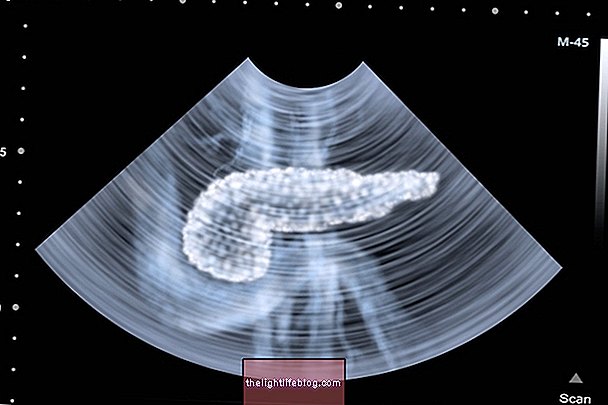Transparent discharge, a clear egg type, is normal and affects all women of childbearing age, between 12 and 50 years of age, during the fertile period. This intimate secretion is increased on certain days of the month to allow the spermatozoa to slide better and reach the ovum, initiating the pregnancy.
This type of intimate female secretion is greater on days of ovulation, creating favorable conditions for pregnancy, and the younger the girl is, if she does not use any contraceptive method, the greater her chances of getting pregnant. We indicate below when the clear type of egg is normal, and what can be when it happens in pregnancy or comes accompanied by bad smell.

Transparent odorless odor
Transparent discharge, a clear egg type, is the main symptom of the fertile period, and when it is more abundant, it may represent the day of ovulation, appearing before menstruation.
Some signs that may indicate the abundance of this discharge are:
- Semi-transparent flow with elastic and slightly sticky consistency, very similar to egg white;
- A colorless and odorless discharge, which can be observed in the underwear, leaving the panties wet;
- It can be noticed when cleaning after urinating, because the intimate region is very slippery.
This discharge, abundant or not, as long as it is not accompanied by bad smell or other symptoms, such as burning when urinating and pain in sexual relations, is normal and does not bring any unpleasant consequences to the woman. Clear egg-type discharge also occurs in women who have tubal ligation, because this is an alteration caused by the ovaries, which remain intact after this procedure.
Although normal discharge is transparent in most women, for some, this discharge may be slightly yellowish. Know what each color of vaginal discharge may indicate.
What to do: No specific treatment is necessary, as this change is normal, but a very thin daily intimate absorbent may be used to keep the panties always dry, preventing the development of candidiasis, for example. In addition, it is recommended to take a shower and change your underwear daily.
Transparent bleeding with blood
The abundant transparent discharge with traces of blood may indicate that there was fertilization, and that the sperm was able to enter the ovum, resulting in pregnancy. This may be the first sign of pregnancy, but that is not always observed by all women. When the blood is more mixed the natural secretion of the vagina, this can cause a pinkish discharge, which can also represent fertilization, or nidation. Get to know the first 10 symptoms of pregnancy.
What to do: The best way to confirm pregnancy is to wait for the correct day to take the pregnancy test, to avoid false / negative result, it can be done through a pharmacy test or blood test, which is more specific and best suited to detect pregnancy. Watch our video with other typical pregnancy symptoms:

Transparent drainage in large quantities
The increase in clear discharge is very common during pregnancy and this is a normal situation, and occurs because there is a greater blood flow in the region and the hormones in the bloodstream favor its appearance. In this case, it is a transparent discharge without smell and less sticky and does not indicate an ovulation, being only an increase of the natural vaginal secretion.
What to do: Vaginal discharge should only be of concern if it has an unpleasant color or odor. In this case, it may represent an infection caused by fungi or bacteria, which if left untreated can lead to more serious injuries and even to infertility. When noticing such a discharge, the woman should immediately make an appointment with a gynecologist so that the gynecologist can recommend the most appropriate remedy for this type of situation.
Transparent discharge with bad smell
Normal clear discharge does not smell, so if there is odor, this usually indicates an infection caused by fungi or bacteria. As the hours pass, the discharge may change color, and become yellow with traces of blood or greenish.
What to do: In this case it is important to go to the gynecologist so that he can evaluate the intimate region, observe the color and thickness of the discharge, and indicate the treatment, which may be the use of antibiotics as an ointment to apply directly to the vagina or tablets.

























